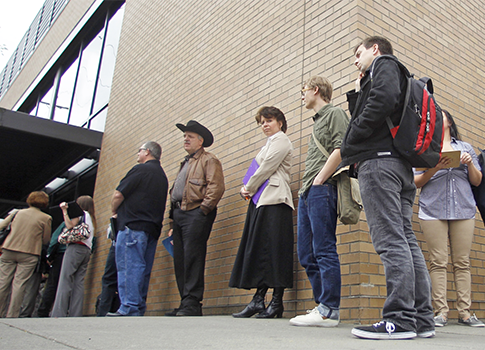A record-high average of 24,963,000 foreign-born workers were employed in the United States in 2015, according to data released Thursday by the Bureau of Labor Statistics.
According to the bureau, foreign-born individuals include legally admitted immigrants, refugees, temporary residents such as students and temporary workers, and undocumented immigrants.
The bureau began recording this data in 2002. At that time, there were nearly 19 million foreign-born workers employed in the United States. The number has increased by 31.4 percent since then.
While the average number of native-born workers employed also reached a record high in 2015, it did not increase at the same rate as foreign-born workers. In 2015, there were an average of 123,871,000 native-born workers employed, up from 117,487,000 workers employed in 2002, an increase of 5.4 percent.
Additionally, the bureau found that the unemployment rate for foreign-born persons was 4.9 percent for 2015, lower than the 5.4 percent unemployment rate for the native born.
"Foreign-born workers were more likely than native-born workers to be employed in service occupations; natural resources, construction, and maintenance occupations; and production, transportation, and material moving occupations," the release states. "Native-born workers were more likely than foreign-born workers to be employed in management, professional, and related occupations and sales and office occupations."
Foreign-born workers had much higher rates of employment in construction and maintenance occupations than their native-born counterparts. Of foreign-born workers, 13.8 percent were employed in this industry versus 8.3 percent of native-born workers. Additionally, 23.4 percent of foreign-born workers were employed in service occupations while only 16.2 percent of native-born workers were employed in the same industry.
Sen. Jeff Sessions (R., Ala.) wrote a letter on May 13 urging his colleagues to reject any provision that would increase the number of low-skilled temporary workers in the United States.
"Millions of Americans who are currently unemployed or underemployed directly compete for the jobs that are often filled by H-2B workers: i.e. landscapers, hotel workers, loggers, construction workers, amusement and recreation attendants, waiters or waitresses," Sessions said.
"Blue-collar American workers have long endured an excess of foreign workers," he said. "Millions of foreign workers have been brought to the United States, while countless jobs have gone overseas."
The report also found that foreign-born workers earn lower wages than their native-born competitors.
"The median usual weekly earnings of foreign-born full-time wage and salary workers were $681 in 2015, compared with $837 for their native-born counterparts," the bureau stated. "Differences in earnings reflect a variety of factors, including variations in the distributions of foreign-born and native-born workers by educational attainment, occupation, industry and geographic region."
